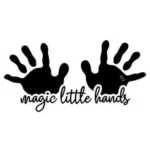
There’s something magical about watching your toddler dive into their own little world of play. You see them chatting with stuffed animals, stacking blocks, or “reading” books they love. Meanwhile, you sip your (finally hot) coffee or knock out a few chores. Sounds like a dream, right? If you’re reading this, chances are your reality looks more like a tiny shadow glued to your leg, wailing the moment you attempt to do something without them.
I’ve been there. The days when my little one wouldn’t let me step away for a second without a dramatic meltdown? Absolutely exhausting. Now, I can walk away to do the dishes, and my toddler immediately starts playing on her own!
The good news? Independent play isn’t some magical skill that only a few toddlers master. It’s something you can encourage and nurture, even if your child is currently in full-on Velcro mode. Let’s talk about why it matters and, more importantly, how to make it happen for YOU!
Why Independent Play Matters
Before diving into the “how,” let’s talk about the “why.” Independent play isn’t just about giving you a breather (though that’s definitely a perk!). It’s actually a crucial part of your toddler’s development. When kids play on their own, they:
- Learn problem-solving skills
- Develop creativity and imagination
- Gain confidence in their abilities
- Strengthen focus and attention span
- Build resilience by working through frustration
Encouraging independent play isn’t about pushing your child away—it’s about giving them the tools to explore, create, and entertain themselves while still feeling connected to you. Sometimes I feel a tiny pang of sadness seeing them so absorbed in solo play, but I always remind myself: This is good for them!
Start Early & Set the Stage for Success
Expecting your clingy toddler to suddenly play alone for an hour? Probably unrealistic. Independent play is a skill that needs to be built gradually. Here’s how you can start:
- Create a “Yes” Space – Set up a safe, dedicated play area where your toddler can explore freely without constant supervision. A secure environment makes them more likely to engage!
- Rotate Toys Regularly – Too many toys at once can be overwhelming. A simple rotation makes old toys feel fresh and exciting again.
- Introduce Open-Ended Toys – Blocks, dolls, play kitchens, and art supplies encourage creativity and longer play sessions compared to single-purpose toys.
- Give Them Your Undivided Attention First – Before expecting them to play alone, spend some focused time playing together. This helps fill their “connection cup” so they feel secure venturing into solo play.
- Model Independent Play – Toddlers love to mimic! If they see you engaged in your own activity—reading a book, drawing, or even folding laundry—they’ll be more likely to play independently too.
- Allow for Some Boredom – It is tempting to entertain them 24/7, but boredom fosters creativity. Give them time to figure out what to do next instead of always jumping in with suggestions.
What to Say (and Not Say) to Encourage Independent Play
How we talk about play makes a big difference. Sometimes, without realizing it, we sabotage independent play with our words. Let’s look at what works and what doesn’t.
What to Say:
- “Wow, I love how you’re building that tower all by yourself!” (Encourages confidence)
- “You’re doing such a great job playing! I’ll be right over here.” (Reassures them that you’re nearby)
- “What’s your stuffed animal saying? Tell me about it when I’m done with the dishes!” (Gives them a reason to keep playing)
- “I can’t wait to see what you create!” (Inspires them to keep going)
What NOT to Say:
- “Go play.” (Too vague and dismissive)
- “You don’t need me to play.” (Might make them feel rejected)
- “Let me show you how to do it.” (Takes away their independence)
- “Ugh, I just need you to play by yourself for a bit.” (Adds pressure and guilt)
Sometimes, even interrupting to praise them can break their play flow. Interrupting my kids (even just to give a compliment) can ruin the whole thing. You’ll learn what works best for your child over time, so adjust as needed!
Bridging the Gap: When They Struggle to Play Alone
If your toddler panics the moment you step away, try these transition strategies:
- Parallel Play First – Sit with them but let them lead. Reading a book nearby or folding laundry while they play next to you can help ease the transition.
- Offer a “Mission” – Give them a fun task like “Can you build a zoo for your animals?” or “I wonder how high this tower can go?”
- Start a Story & Walk Away – Begin playing with a toy and then say, “I wonder what happens next… You keep playing while I grab a snack!”
Let Go of the Mom Guilt
Independent play isn’t about pushing your child away—it’s about giving them space to grow. Some days will go smoothly, while other days will feel like a cling-fest. That’s okay! Your toddler’s ability to play alone will ebb and flow, just like everything else in this parenting journey. Everyone has an off day now and then, and sometimes those little ones just need some extra attention!
Celebrate the small wins, whether it’s five minutes of solo block-stacking or a full 20 (or more) minutes of deep pretend play. Over time, those moments will stretch longer, and one day, you’ll look over and realize they’re completely immersed in their own little world—no prompting needed.





